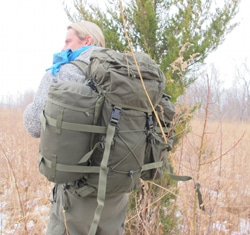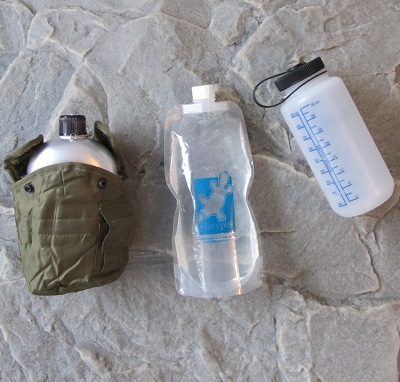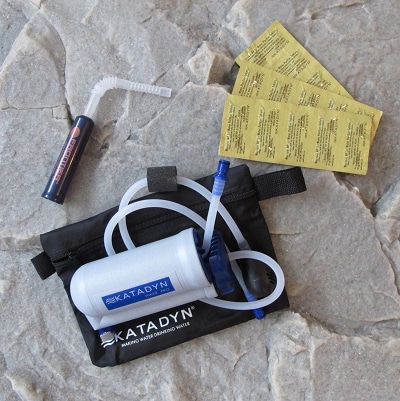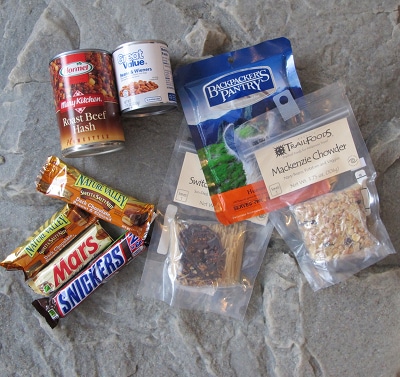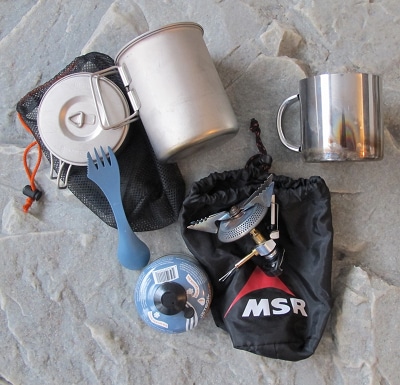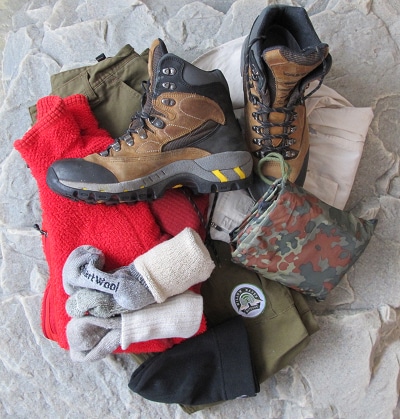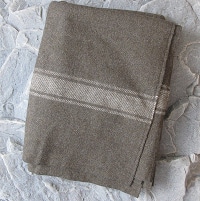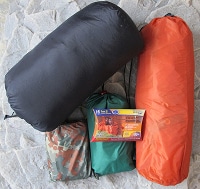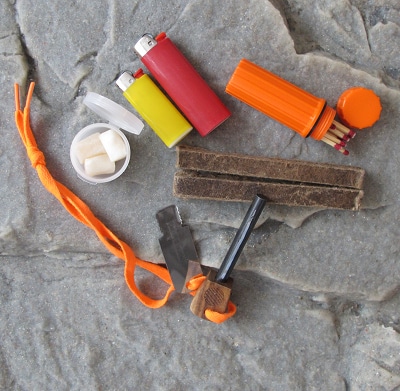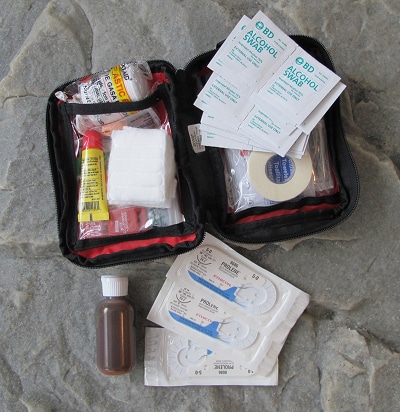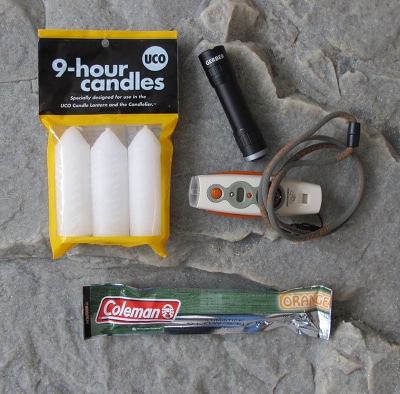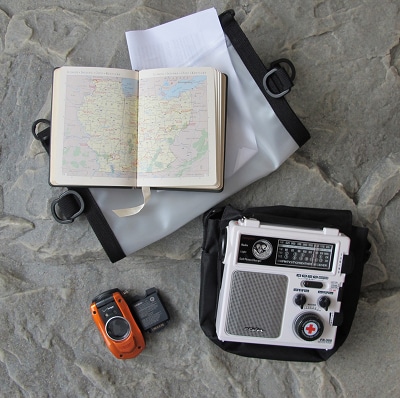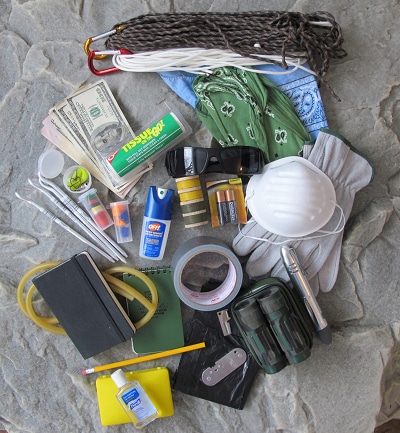Why Vinegar?
The use of vinegar with a variety of plants or essential oils for cosmetic purposes
can be traced back to the Romans and was fashionable during
the nineteenth century as vinegar de toilette.
| The outer layer of the hair, the cuticle, covers the hair shaft and protects it like the bark on a tree. The cuticle is made of overlapping layers of long scales that lie along the surface of the hair like shingles on a roof. It is the condition of the cuticle scales that determines whether you are going to have a bad hair day. When the cuticle is in good shape, is unbroken, and lies flat, your hair has a smooth appearance. When the layers of the cuticle are tightly knit together, the light is able to reflect off the cuticle. This is what makes hair shine! The cuticle opens when we shampoo our hair. When the cuticle layers are open and not knit together, the hair will feel rough, coarse and brittle. The hair will absorb the light rather than reflect it, which gives the appearance of dull and lifeless hair. | |
Vinegar removes scaly build-up and residue from hair shafts and closes the cuticles. Since residue coats the hair causing it to look dull, removing residue gives your hair more shine. By closing the cuticles, the hair slides more easily and there will be fewer tangles. Vinegar has a tonic action that promotes blood circulation in the small capillaries that irrigate the skin.
| | | |
| The cuticle, covers the hair shaft and protects it like the bark on a tree. If the cuticle scales are laying flat, the hair will look shiny, and a comb or brush will glide smoothly. | If the cuticle stays open it can start a tear in the hair shaft that ultimately leads to breakage of the hair shaft. |
What Kind of Vinegar Should I Use?
Although plain white vinegar will work just fine, Apple Cider Vinegar seems to be the favorite hair care vinegar.
Simple Recipe
A good amount to make for long hair is 1/2 tablespoon of vinegar to 1 cup of water. If you want to get fancy, create a vinegar rinse tailored to your hair by adding herbs and/or natural essential oils. I have included an herb and vinegar rinse and an essential oil vinegar rinse that I use below.
How Do I Use The Vinegar Hair Rinse?
After shampooing apply the vinegar rinse.
Now you have a few choices. You may rinse it all out if you want, or leave the rinse on your hair. I rinse a little--one quick spray of water. Leaving the vinegar rinse on your hair helps prevent tangles in long hair. Since the vinegar restores natural pH it also helps prevent an itchy scalp. As your hair is drying you will smell vinegar, but once your hair dries, no smell. I was skeptical at first--but this really works!
How Often Can I Use The Vinegar Hair Rinse?
Since everyone's hair is different you should use your own judgment on this. Some say that vinegar rinses may be drying if used every day and it is best to restrict use to two times per week. I used a vinegar rinse every other day for the first few weeks--until my hair adjusted to the new shampoo--now once or twice a week keeps my hair healthy and shiny. Many customers have found this regimen to work, but do some experimenting!
Some Helpful Hints
Pouring cold vinegar rinse on your hair in the shower may be a more invigorating experience than you would like. (Although if you're feeling brave, the cold water will give your hair added shine.) Keep a small plastic container of vinegar in your shower. Next, recycle a small clear plastic bottle with a squirt top (your old shampoo bottle may work). Choose the amount of rinse you will need to make for your hair. Mark the vinegar line and water line on your bottle. Now you can pour in the vinegar and add warm water from your shower and squirt the rinse on your hair!
| Beauty Secret Facial Toners Toner #1: Use one teaspoon of cider vinegar and two tablespoons of water. Toner #2: Use one part apple cider vinegar to three parts witch hazel or rosewater for a gentle toner suitable for all skin types. Toner #3: Use a natural cotton pad to apply the toner to your facial area. Note: Add a drop or two of lavender or tea tree essential oil to your toner |
![]()
Fancy Herb & Vinegar Hair Rinse
Rinsing your hair with vinegar after shampooing leaves it shining. Certain herbs can highlight or enhance your hair color, as well as condition it. For example, rosemary and parsley are good for dark hair, sage will darken graying hair, chamomile will highlight blonde or light brown hair, calendula conditions, lavender and lemon verbena add fragrance, linden is good for frequently shampooed hair, and nettles will control dandruff.
| This rinse is made from the herbs themselves, not essential oils. You can use either fresh or dried herbs. If you have a rosemary bush handy, use a sprig or two-- each about 5 inches long. For dried rosemary use about a tablespoon. Rosemary is one of the best herbs for hair. Fresh lavender is also nice to use. Most of the herbs you can grow in your garden will probably be useful in some way or other. Fresh herbs are wonderful to use, but do remember to rinse them if they have been sprayed with anything. Cut fresh herbs in the morning after the dew has dried. |  |
If using dried herbs, you can use them either loose, tied up in cheesecloth or muslin fabric, or in teabag form (like one chamomile teabag). If use using loose herbs, you will need to strain your "tea" prior to use (I use a coffee filter)--you don't want to have bits of herb caught in your hair afterwards!
Although there is no need to sterilize equipment, since this is not going to be a food product, clean all equipment thoroughly before starting. Wash in hot, soapy water and rinse well in hot water.
Herb & Vinegar Hair Rinse Recipe #1: This is a quick recipe for one application
Ingredients
| |
Directions:
1) Boil the water in a small saucepan.
2) Add the herbs and vinegar. Cover and allow the "tea" to steep for at least 15 minutes. If you want a stronger herbal infusion, add more herbs, cover and simmer on the stove for 15 minutes. Then turn off the heat and allow to steep for 30 minutes.
3) Allow your infusion to cool. It should be used that day or refrigerated for later use. You may also double or triple the recipe. Just be sure to refrigerate the unused portion.
4) When you have finished rinsing the shampoo out of your hair, pour the rinse on your hair and massage your scalp. If you have very long hair, as I do, you can dip your hair into the jug before pouring its contents over your head. Avoid getting the rinse in your eyes, particularly if you have used essential oils. Also make sure the temperature of your rinse is just right for you.
5) Rinse it out with fresh water or, for extra conditioning benefits, just leave it in and towel dry hair. The vinegar scent will disappear as your hair dries.
6) Make sure you rinse out the shower afterwards, as some herbs can leave it looking slightly tea stained; similarly, watch out for your towels. The staining is only temporary and washes out very easily; it is more likely to occur with extra strong infusions.
Herb & Vinegar Hair Rinse Recipe #2: This recipe makes a larger batch and takes longer to prepare
| Directions: 1. Place approximately 1 cup of chopped herbs in a glass jar. 2. Cover with 2 cups of vinegar. 3. "Steep" this mixture in a tightly closed jar or bottle in the refrigerator or in a dark, cool place for two weeks. 4. Strain steeped vinegar from herbs through cheesecloth or a coffee filter into a fresh, clean bottle. 5. Refrigerate up to 6 months. (I always leave about a weeks worth in my shower!) Tip: If you don't want to wait two weeks, speed up infusion by heating the vinegar before pouring over herbs. "Steep" for a few days! When ready to use: dilute 1/2 to 1 tablespoon of the herbal vinegar in 1 cup of water. Rinse through wet hair after shampooing. Rinse it out with fresh water or, for extra conditioning benefits, just leave it in and towel dry hair. The vinegar scent will disappear as your hair dries.
|
Heat the rose flowers with the vinegar and water. Bring to a boil and steep for 30 minutes. After cooling , place mixture in a jar with a tight fitting lid and let sit for 2 weeks. Strain the rose flowers from the vinegar and use the liquid for your hair rinse. |
![]()
| Burdock: great for thinning hair, dry, irritated scalp, dandruff, and seborrhea |  |
| Marigold: lightens hair color |  |
| Sage: traditionally used to restore color to graying hair, excellent for week hair Saw Palmetto: good for hair thinning and hair loss Thyme: good for oily hair, dandruff, and mild hair loss Witch Hazel: leaves and bark are astringent and cleanse oily hair Yarrow: for oily hair Yucca: Navajos swear by yucca root to prevent hair loss and to cure dandruff. |  |
Essential Oils: You may add essential oils to the recipe above (I would suggest adding up to 10 drops of lavender or 5 drops of rosemary essential oil) or use the essential oil hair rinse recipe below. Some words of CAUTION:
- There are many wonderful essential oils that could be used but you MUST do some research.
- Essential oils are very strong and many can be skin irritants if not used correctly. Lavender is one of a very few essential oils that can be used directly on skin. Others like clove or thyme essential oil WILL irritate your skin if used full strength. Even though the oils are diluted in this recipe--you must be knowledgeable about the amount of essential oil to use in your dilution.
- Essential oils are expensive. But do NOT use the cheaper fragrance oils or "nature identical" oils. These are synthetic, can cause skin irritation and provide none of the benefits of natural botanical essential oils.
- If you are interested in using essential oils click here for some helpful information.
![]()
Essential Oil Hair Cleaning Vinegar Rinse
Ingredients: (This makes a large batch that you can use as needed)
- 2 cups of cider vinegar
- 10 drops of essential oil (suggestions: lavender, rosemary, clary sage, rose geranium, lemon, or patchouli)
Directions:







